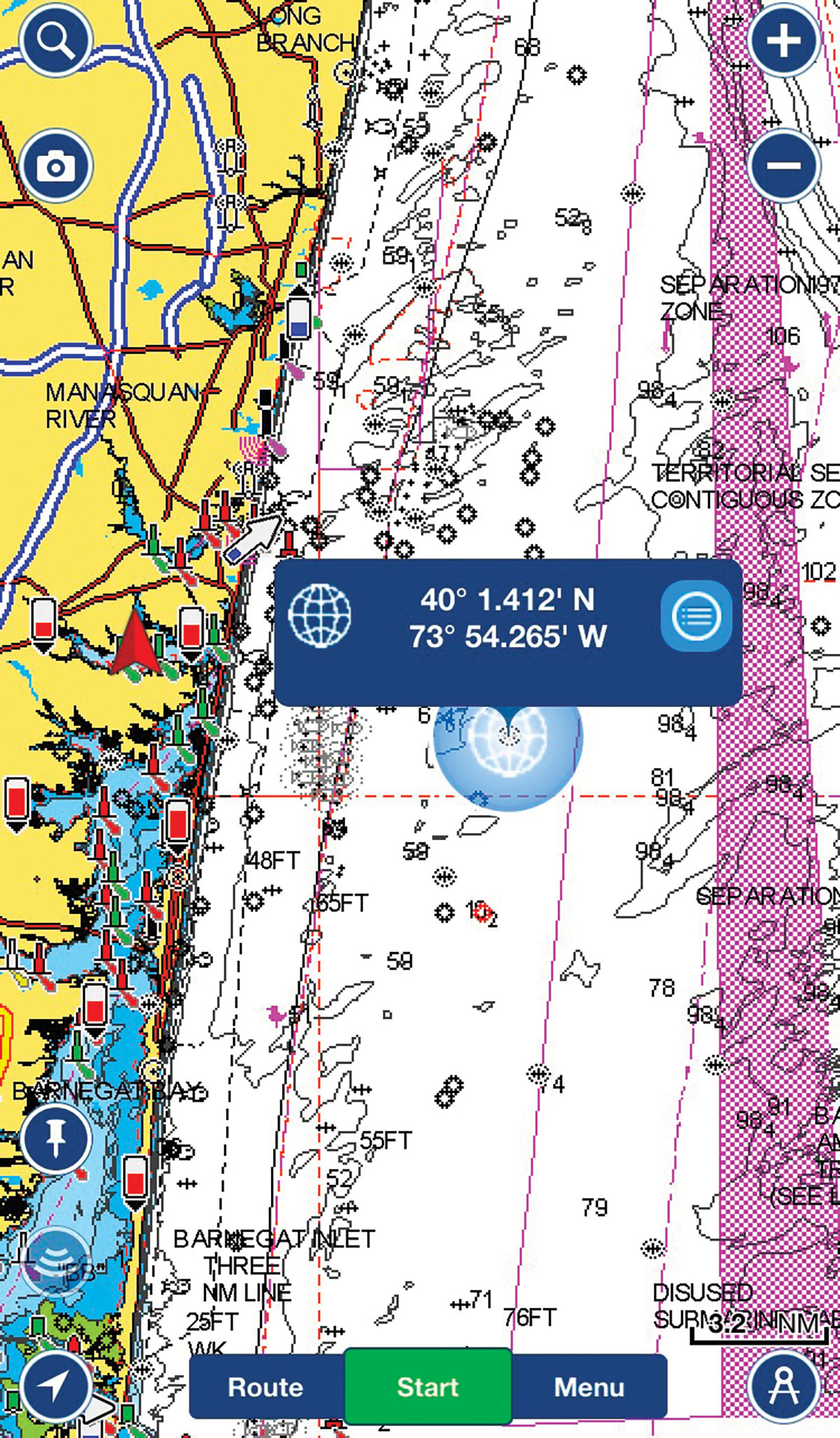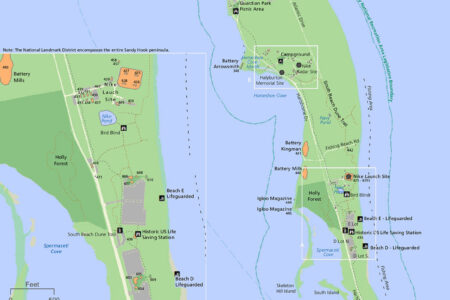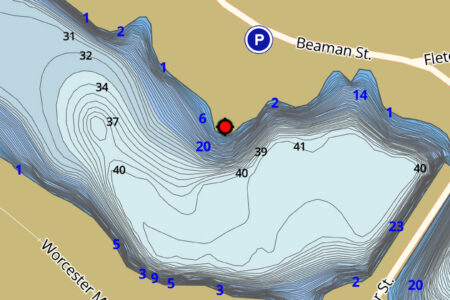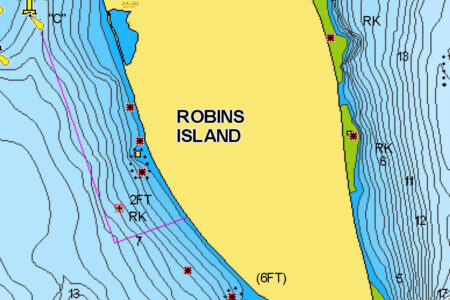 N40 01.412 / W73 54.266
N40 01.412 / W73 54.266
The wreck of the Mohawk was caused when the 387-foot vessel lost steering and rammed into the Norwegian freighter Talisman. Originally, the mast of the shipwreck stuck clear out of the water becoming a navigational hazard. It was ultimately razed and dragged down with steel grates to where it now comes up just 15 feet off the ocean floor.

To reach the wreck is a 7.7-mile run from Manasquan Inlet, where depths range from 65 to 81 feet, and the expanse of the entire debris field or twisted metal stretches for hundreds of yards around the centerpiece of the wreck. The Mohawk Wreck sits between three hot spots, with the Manasquan Ridge on the north side, Southeast Lump on southeast side and East Lump off the east side, so there is plenty of ground to cover on a day out where bottomfishing reigns supreme.
In September and October, black sea bass push outward to their offshore wintering grounds as water temps cool and the Mohawk is a stop by destination they gravitate to during the fall months. Sea bass will colonize the area; many times you can see them “haystacking” above the wreck. Best bets to load a cooler would be to use clam or squid strips on hi-lo rigs equipped with size 3/0 baitholder hooks adorned with red or green beads to dial you into a mess of 1- to 3-pound fish.
Savvy anglers targeting humpbacks over 3 pounds will bounce hammered diamond jigs around the debris as the low profile structure doesn’t claim gear like higher relief wrecks will. Bounce-tap the jigs along the ground, hopping them over and above any of the small snags. Knuckleheaded bass will pounce on the jigs with authority.
Porgy fishing can also be productive here, especially in October when true “poke chop” size fish up to 3 pounds are hanging around the structure. Rig up with size #1 beak hooks and use very small pieces of clams for baits as porgy are adept at nipping away at big baits and picking them off the hook.
Often overlooked, the spot is a red hot summertime ling playground in recent years where coolers can be loaded with red hake up to 3 pounds. Late summer months also offer shots at inshore pelagics like Spanish mackerel, bonito and even a few chicken mahi zipping on by as the structure fields attract plenty of baitfish to the area. Try trolling small 3-inch feathers and Clark Spoons for the speedsters. As summer leads into fall, fluke will also make a pit stop along the debris field as they tend to gravitate toward deeper waters as late summer and fall move in. The low lying structure allows for nearly tangle-free bucktailing.
Once spring returns, blackfish will inhabit the area in April and May and will also return on their way back out into the ocean during November and December. Green crabs or whiteleggers tipped on a tog jig can dial you into the bucktoothed brawlers. With such prolific structure on the Mohawk field, there’s always the nuisance of battling through many bergalls and dogfish on any given day but the rewards definitely outweigh the risks.



